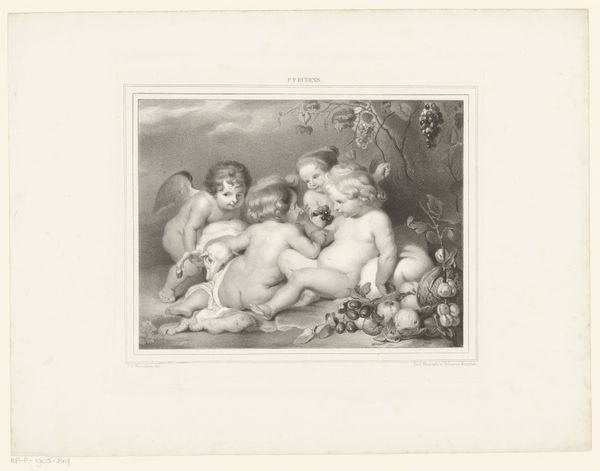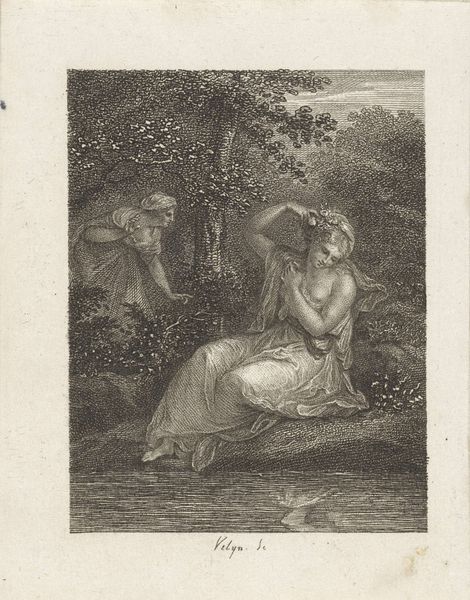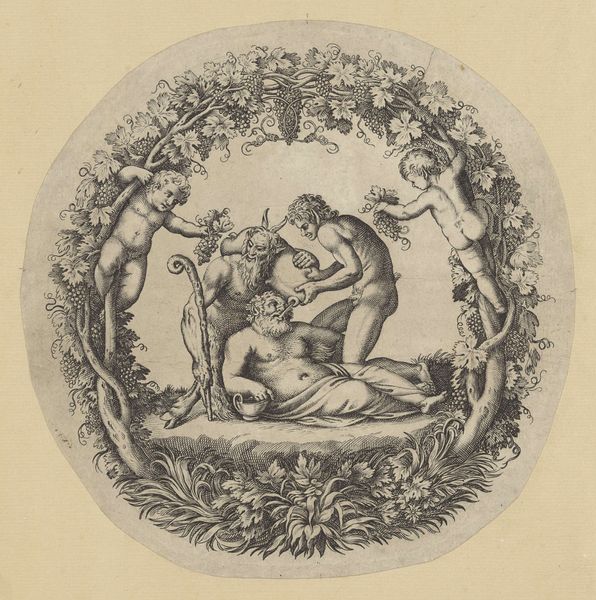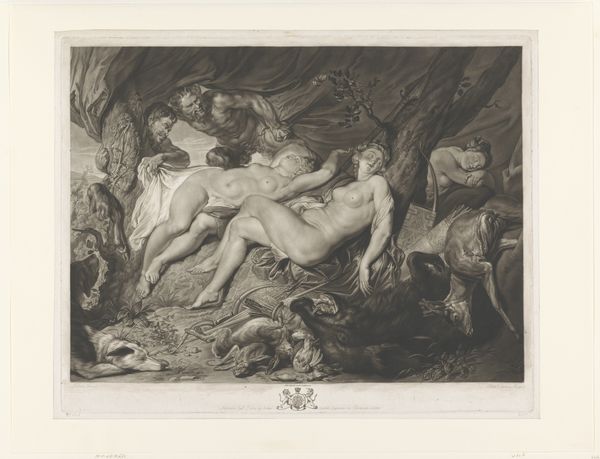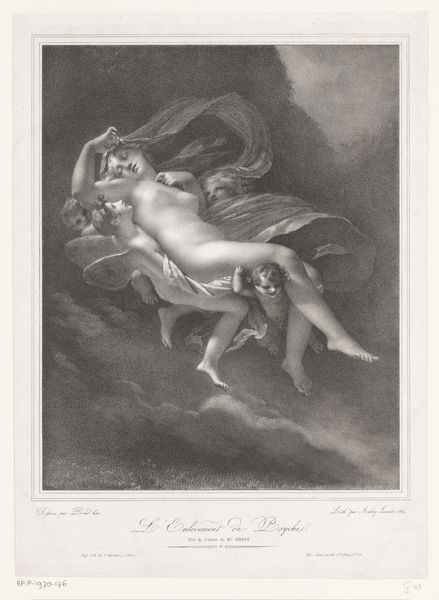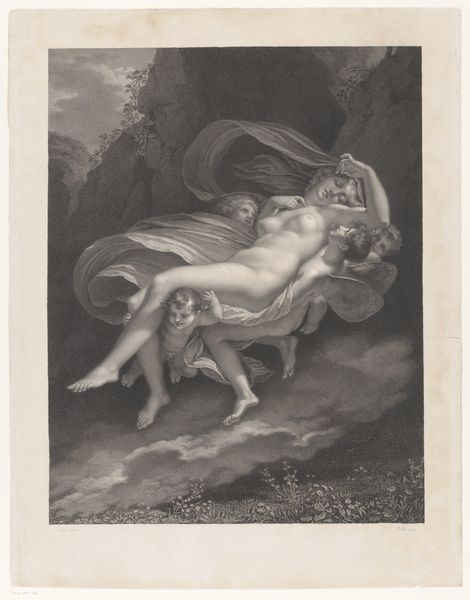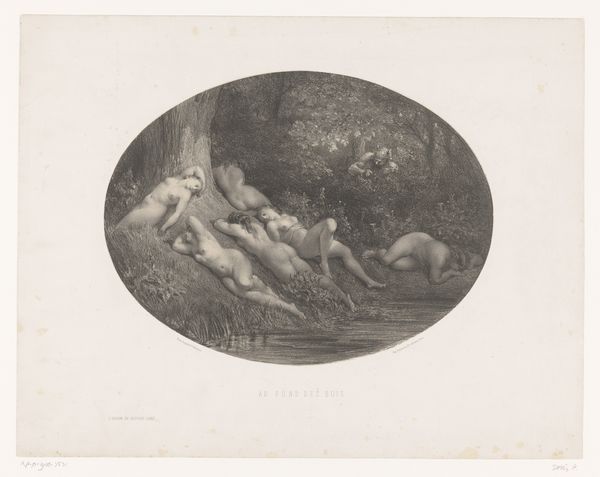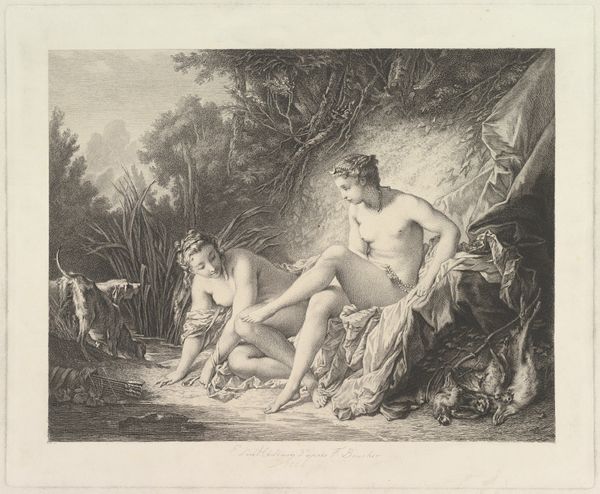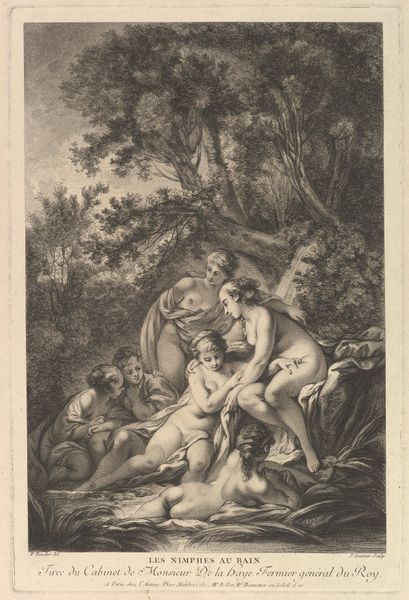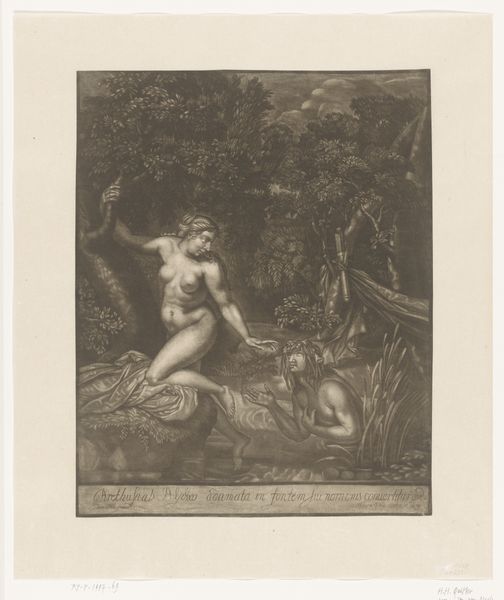
Dimensions: Plate: 9 3/8 × 11 5/8 in. (23.8 × 29.5 cm) Sheet: 11 1/4 × 13 9/16 in. (28.5 × 34.4 cm)
Copyright: Public Domain
Editor: So, this is "Bathing Nymphs," a print from 1787 by Francesco Bartolozzi. The figures have this lovely, soft, almost dreamlike quality... but there's also something very classical about it. What strikes you most when you look at it? Curator: Immediately, I consider how this print, circulated widely, shaped understandings of female beauty and idealised nature in late 18th-century society. Think about the context: rising literacy rates, expanding print culture. These images were readily available. Did that accessibility democratize art or simply propagate certain ideologies about the female form and leisure? Editor: That’s a fascinating point. I hadn't considered the distribution aspect so much. Curator: And notice the theatrical composition. The figures are arranged almost as if on a stage. What does that tell us about how art was being consumed and presented to the public at the time? These weren't radical or overtly political images, but in their depiction of leisure and beauty, they reflect the values and desires of the elite. Editor: So it’s almost… aspirational advertising of its time? Showing an ideal to strive for? Curator: Exactly. And we must remember that institutions, like the Royal Academy, heavily influenced the aesthetics of art and also the socio-political narrative and the function it served. They weren't merely neutral spaces, were they? Editor: Right, I see what you mean. The image becomes a document reflecting its time. Curator: Precisely. Analyzing art within its socio-political and institutional framework offers so many layers of meaning. I think I'm starting to see this Rococo style in a whole new light, after thinking about it more as a public assertion.
Comments
No comments
Be the first to comment and join the conversation on the ultimate creative platform.
